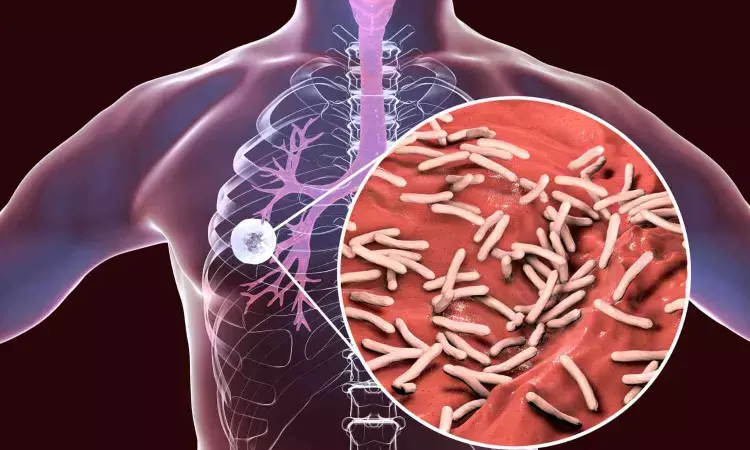- Home
- Medical news & Guidelines
- Anesthesiology
- Cardiology and CTVS
- Critical Care
- Dentistry
- Dermatology
- Diabetes and Endocrinology
- ENT
- Gastroenterology
- Medicine
- Nephrology
- Neurology
- Obstretics-Gynaecology
- Oncology
- Ophthalmology
- Orthopaedics
- Pediatrics-Neonatology
- Psychiatry
- Pulmonology
- Radiology
- Surgery
- Urology
- Laboratory Medicine
- Diet
- Nursing
- Paramedical
- Physiotherapy
- Health news
- Fact Check
- Bone Health Fact Check
- Brain Health Fact Check
- Cancer Related Fact Check
- Child Care Fact Check
- Dental and oral health fact check
- Diabetes and metabolic health fact check
- Diet and Nutrition Fact Check
- Eye and ENT Care Fact Check
- Fitness fact check
- Gut health fact check
- Heart health fact check
- Kidney health fact check
- Medical education fact check
- Men's health fact check
- Respiratory fact check
- Skin and hair care fact check
- Vaccine and Immunization fact check
- Women's health fact check
- AYUSH
- State News
- Andaman and Nicobar Islands
- Andhra Pradesh
- Arunachal Pradesh
- Assam
- Bihar
- Chandigarh
- Chattisgarh
- Dadra and Nagar Haveli
- Daman and Diu
- Delhi
- Goa
- Gujarat
- Haryana
- Himachal Pradesh
- Jammu & Kashmir
- Jharkhand
- Karnataka
- Kerala
- Ladakh
- Lakshadweep
- Madhya Pradesh
- Maharashtra
- Manipur
- Meghalaya
- Mizoram
- Nagaland
- Odisha
- Puducherry
- Punjab
- Rajasthan
- Sikkim
- Tamil Nadu
- Telangana
- Tripura
- Uttar Pradesh
- Uttrakhand
- West Bengal
- Medical Education
- Industry
HACOR Score may predict NIV Failure among Post-TB Obstructive Airway Disease Patients: Study

INDIA: A recent study published in the Journal of the Association of Physicians of India concluded that The HACOR score is useful for predicting the likelihood of non-invasive ventilation (NIV) failure in patients experiencing an acute exacerbation of post-tuberculosis obstructive airway disease (TB-OAD).
Post- Post-Tuberculosis obstructive airway disease is associated with pulmonary TB. In India, smoking is a common cause of chronic AOD. Cough, breathlessness, obstructive abnormality, and spirometry are the symptoms which are associated with it. Inhaled steroids and inhaled bronchodilators are the mainstay treatment of post-TB-OAD. Hypoxia and respiratory fatigue are the indicators for hospitalization. Considering this, Siddharth R Waghmare, from the Department of Respiratory Medicine, Lokmanya Tilak Municipal Medical College and General Hospital (LTMGH), Mumbai, Maharashtra, India, et.al conducted a study to assess the utility of HACOR score in acute exacerbation of post- tuberculosis obstructive airway disease ( post – TB-OAD).
For this purpose, the research team conducted an observational study with 100 patients with acute exacerbation of post-TB-OAD. HACOR score was calculated for patients in acute exacerbation of post-TB-OAD who needed non-invasive ventilation (NIV) support in 1,12,24,48 hours. A cutoff score of >5 was used, and the specificity, sensitivity, positive predictive value, and negative predicted value were calculated.
After 1 hour of the NIV trial, the receiver operating characteristic (ROC) curve was plotted based on the HACOR score. Paired t-test was used to analyze the trend in HACOR scores in subjects requiring NIV for up to 2 days. To calculate sensitivity and specificity truth table was used for evaluation.
They found the following results: -
- Out of 100 patients, 38 were classified in the NIV failure group. The average HACOR score at 1 hour for this group was 9.47.
- For a score greater than 5, the sensitivity was 89.47% and the specificity was 87.09%. The positive predictive value was 80.95%, while the negative predictive value was 93.10%.
- The area under the ROC curve (AUC) was 0.853. In the NIV failure group, the mean score increased over time, whereas in the NIV success group, it decreased.
- The change in the score in the NIV success group was statistically significant
- In the NIV failure group, 34 patients had HACOR scores above 5, whereas only 8 patients in the NIV success group had scores above this threshold. The sensitivity of the score was 89.47%, and the specificity was 87.09%.
- The positive predictive value of the score was 80.95%, and the negative predictive value was 93.10%. ROC analysis of the HACOR score at 1 hour revealed an area under the curve of 0.853.
“HACOR score can be used to predict failure in post-TB-OAD patients. HACOR score demonstrates higher specificity and negative predictive value in predicting NIV failure. Patients whose scores >5 require more frequent monitoring whereas an increasing score is considered as a harbinger of impending NIV failure.”, the researchers concluded.
Reference:
Waghmare, S. R. (2024, August 1). Utility of the HACOR score in patients with acute exacerbation of post-tuberculosis obstructive airway disease: A retrospective observational study. The Journal of the Association of Physicians of India, Volume 72, Issue 8, P26-29, August 2024. https://www.japi.org/article/japi-72-8-26
Deepanshi Bhatnagar (MSc Nutrition and Dietetics) is a professional with a master's degree in Nutrition and Dietetics from MRIIRS. With a strong academic background, she is well-versed in the principles of nutrition and dietary science. At Medical Dialogues, Deepanshi serves as the correspondent for fact-checking, where she is responsible for verifying and evaluating claims related to nutrition and diet, ensuring that all content is accurate, evidence-based, and scientifically sound.
Dr Kamal Kant Kohli-MBBS, DTCD- a chest specialist with more than 30 years of practice and a flair for writing clinical articles, Dr Kamal Kant Kohli joined Medical Dialogues as a Chief Editor of Medical News. Besides writing articles, as an editor, he proofreads and verifies all the medical content published on Medical Dialogues including those coming from journals, studies,medical conferences,guidelines etc. Email: drkohli@medicaldialogues.in. Contact no. 011-43720751


